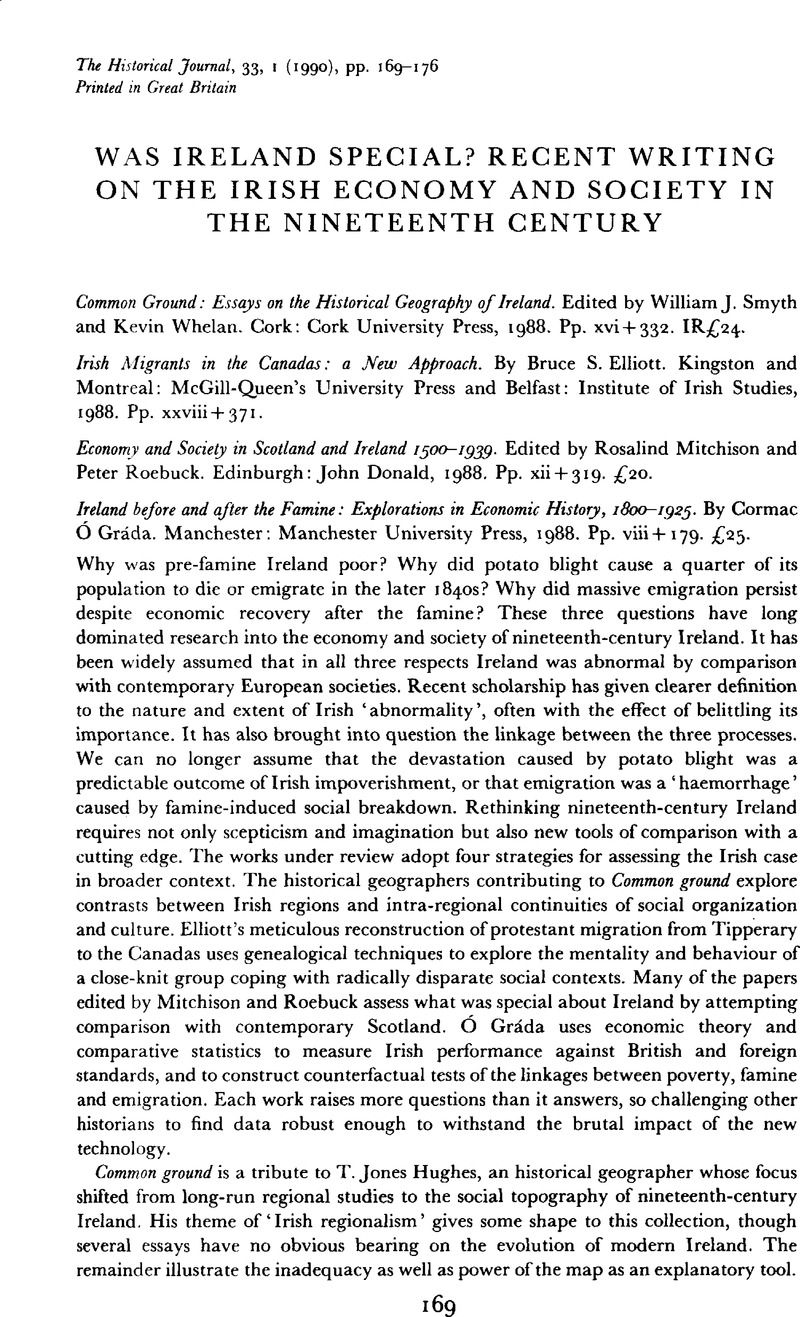Article contents
Was Ireland Special? Recent Writing on the Irish Economy and Society in the Nineteenth Century
Published online by Cambridge University Press: 11 February 2009
Abstract

- Type
- Review Articles
- Information
- Copyright
- Copyright © Cambridge University Press 1990
References
1 Miller, Kerby A., Emigrants and exiles: Ireland and the Irish exodus (New York, 1985)Google Scholar.
2 Devine, T. M. and Dickson, David (eds.), Ireland and Scotland 1600–1850 (Edinburgh, 1983), p. 261Google Scholar.
3 Curwen, John Christian, Observations on the state of Ireland (London, 1818), II, 32Google Scholar, quoted in Townley, John, The diseases, regeneration and culture of the potato (London, 1847), p. 3Google Scholar.
4 Monteagle to Clarendon, 25 February 1849, in National Library of Ireland, MS 13399/8.
5 Mill, J. S., Principles of political economy (London, People's edn, 1865), pp. 219–20Google Scholar.
6 Gráda, Cormac Ó, ‘Irish agricultural output before and after the famine’, Journal of European Economic History, an, XII, I (1984), 149–65Google Scholar, specifies the estimates for 1840–5 and 1854 only.
7 My calculations indicate changes in the value of agricultural output using (a) current prices, (b) 1840–5 prices, and (c) 1854 prices. If the output share for oats were 73 per cent in 1840–5 and 40 per cent in 1854, the index figures for 1854 (1840–5 = 100) would be (a) 111, (b) 89 and (c) 80. If output share were held at 73 per cent, the result would be (a) 122, (b) 98 and (c) 87. If it were held at 40 per cent, the figures would be (a) 122, (b) 98 and (c) 86.
8 Bonn, Moritz J., Modern Ireland and her agrarian problem (Dublin edn, 1906), p. 35Google Scholar.
9 Mitchison, and Roebuck, , Economy and society, p. 171Google Scholar.
- 3
- Cited by




